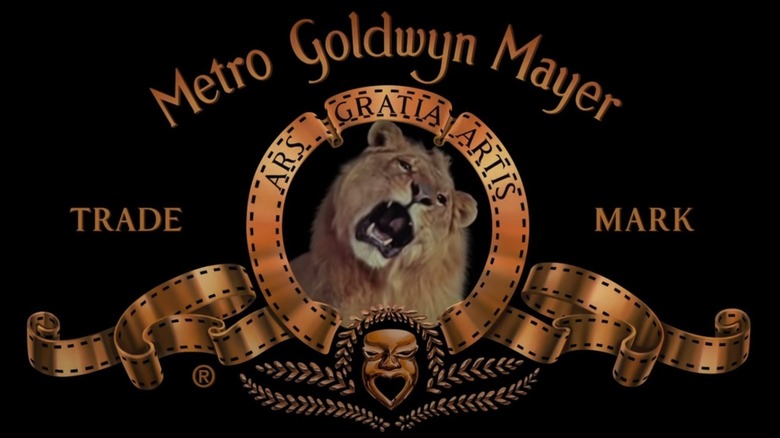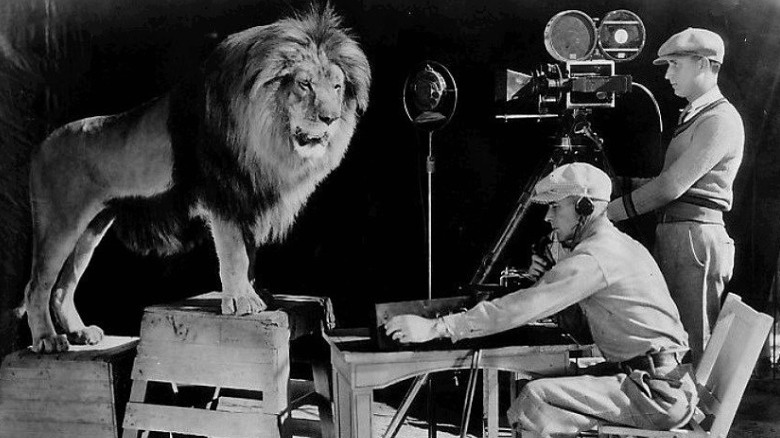The Truth Of Leo The MGM Lion
Leo the lion might be the most seen animal in history, even if most people would not recognize his name. According to Smithsonian Magazine, Leo is synonymous with the Metro-Goldwyn-Meyer film studio, commonly known as MGM, that has been a cinema mainstay for nearly a century. The opening logo and lion roar are immediately identifiable to the moviegoing public, but the history of the many Leos to adorn the silver screen hasn't always been straightforward.
The first lion was named Slats, not Leo, and his iconic roar was missing from the original on-screen logo, albeit for good reason: MGM predates the use of sound in movies. Slats was born in the Dublin Zoo and chosen by logo designer Howard Dietz as an homage to the mascot of his alma mater, Columbia University. It was Slats' successor Jackie who would first roar onto screens, and would also be the first to do so in technicolor after introducing "The Wizard of Oz." The roaring lion was swiftly becoming an icon of the world of film.
According to Mental Floss, Jackie was just the second in a line of seven lions that were ready for their close-ups. He had an interesting enough life for a movie of his own.
A new lion for a new era
Born to a mother and grandmother with performance experience, the lion survived train wrecks, explosions, a sinking boat, an earthquake, and even a plane crash, earning him the nickname "Leo the Lucky." The lion, who appeared in over 100 movies himself, was also fond of kittens. He died in the Philadelphia Zoo in 1935, although his filmed roar was used until 1956.
Two other lions, Tanner and George, didn't make much of an impression, but in 1957 a new Leo was brought aboard, and has remained as the MGM logo ever since. Leo also had a star turn of his own, appearing in some of the original Tarzan films and television series. It's remarkable on a couple of points, not least of which is the fact that Leo held the job for over 60 years, and lions' life span is usually about a quarter of that.
In a development that definitely fits with modern times, Gizmodo reported earlier this year that Leo can now do whatever it is lions do when they retired: He's has been replaced by a digital copy. The CGI version was scheduled to debut last summer at the beginning of the Aretha Franklin biopic "Respect."
With his reign over the theaters lasting over half a century, Leo's roar has become firmly planted in the public consciousness, a frequent subject of parody, and a mainstay of American cinematic culture.

